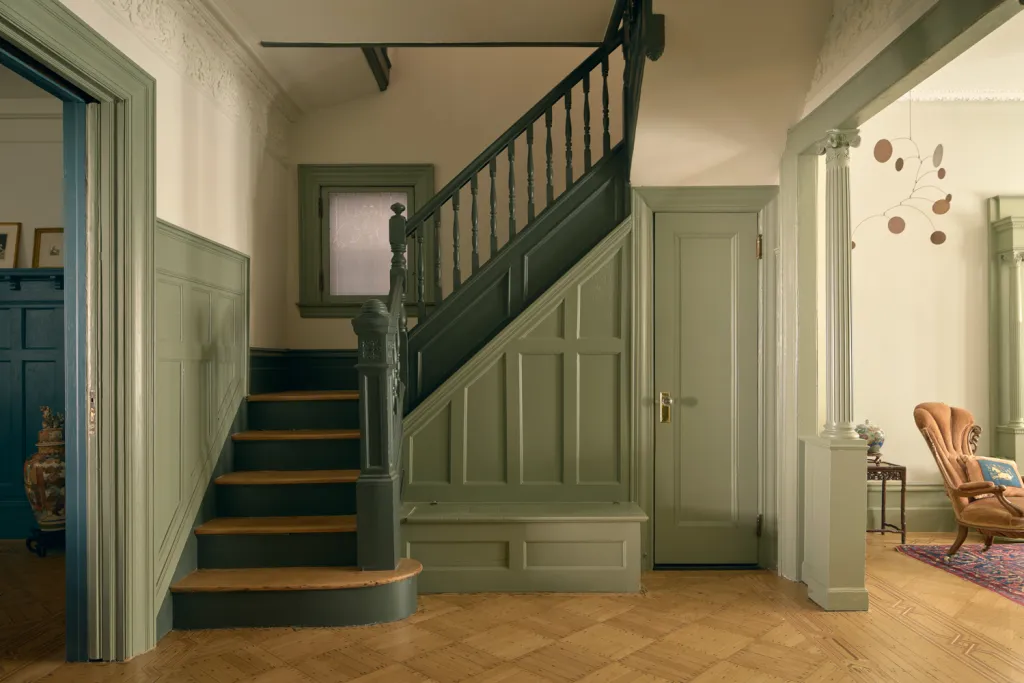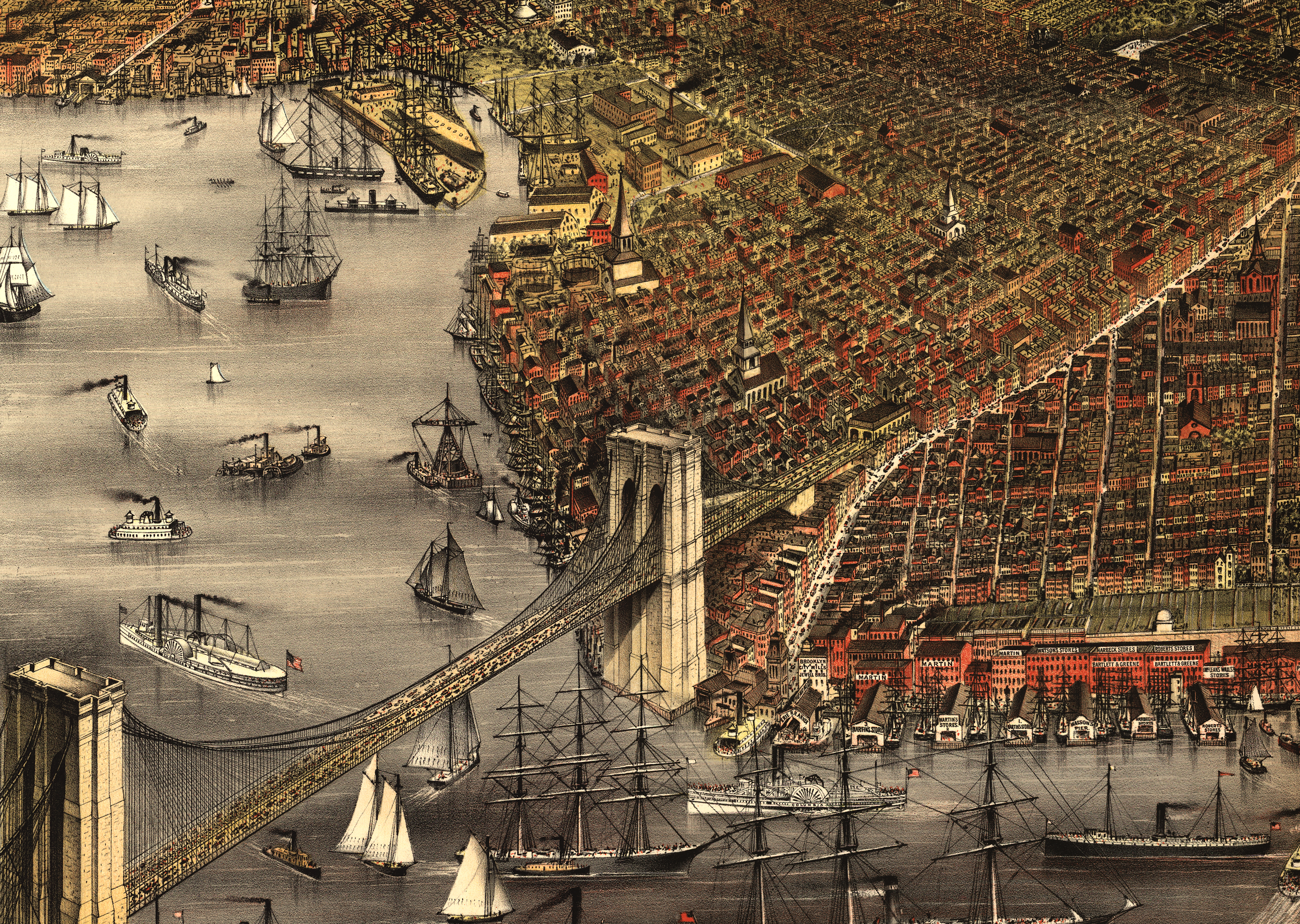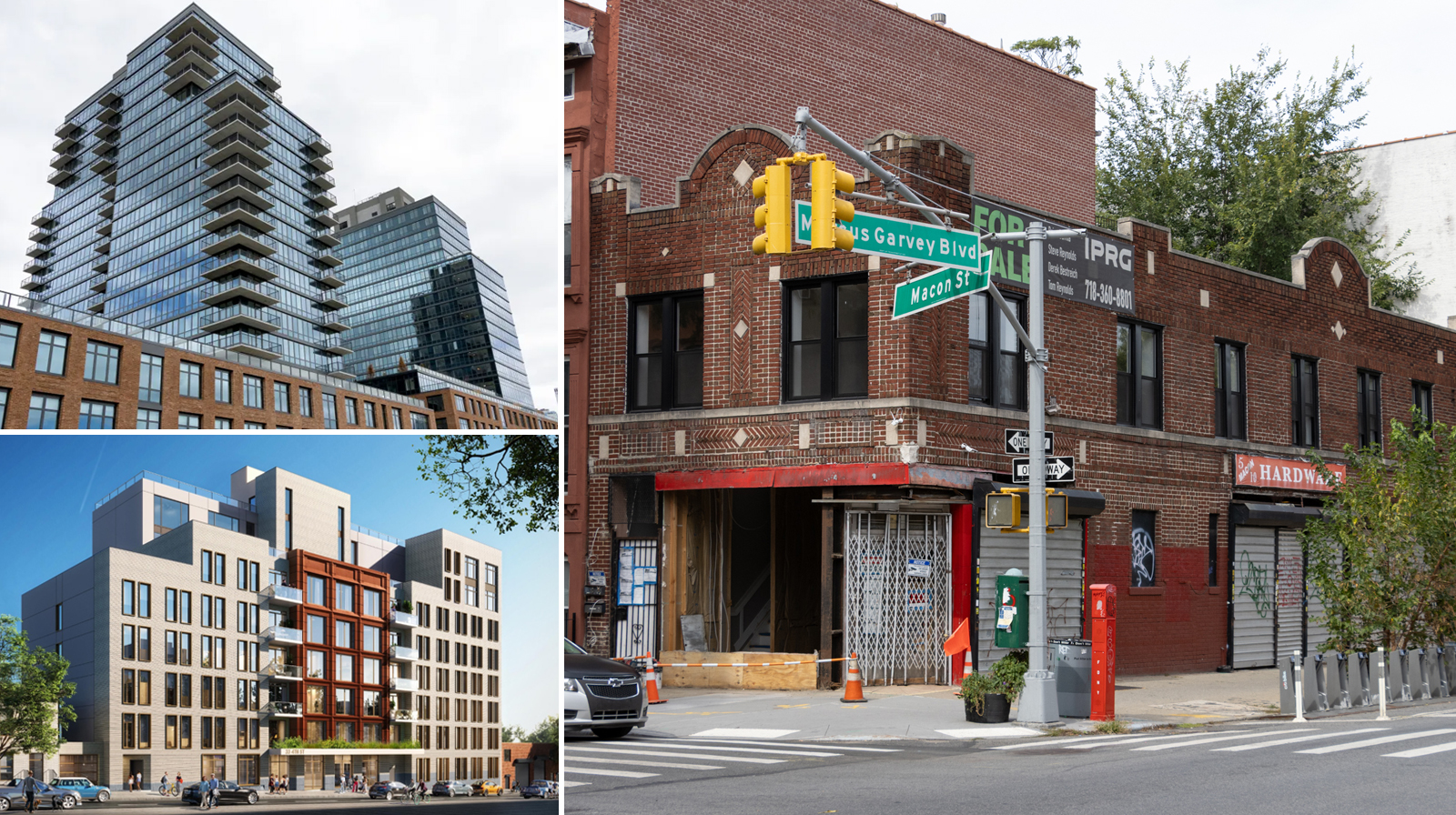Piece of Historic Wallabout Threatened by Developers
The group of four large commercial properties that take up the entire western side of Hall Street (at left in the bottom photo) between Flushing and Park Avenues in Wallabout—two of which (30 Hall and 12 Hall, pictured at top) are of architectural and historic significance—quietly changed hands last December for $10 million. The new…




The group of four large commercial properties that take up the entire western side of Hall Street (at left in the bottom photo) between Flushing and Park Avenues in Wallabout—two of which (30 Hall and 12 Hall, pictured at top) are of architectural and historic significance—quietly changed hands last December for $10 million. The new buyers, the team behind HK Management that includes Harry Kotowitz, Howie Klaus and Jeffrey Sitt, have been taking pains to keep a low profile as they seek the city’s complicity in their plot to destroy a piece of Wallabout history.
Architectural historian and Columbia prof Andrew Dolkart discussed the buildings in his 2005 survey of the Wallabout area:
The buildings that survive on the west side of Hall Street were erected by two wholesale grocery businesses. E. Le Grand Beers, who also erected buildings on the east side of Washington Avenue, commissioned the large, seven-story, brick (later stuccoed over), cold storage warehouse at 30-38 Hall Street from George Chappell in 1898. This building was extended to the north (Nos. 24-28) in 1918. Charles Hutwelker commissioned two cold storage buildings to the north, both designed by C. E. Huntley & Co. Hutwelker was a meat packer who went into business in Brooklyn in 1884. The Hall Street warehouses were initially occupied by the Charles Hutwelker Beef Export Company. No. 14-16 was designed in 1909 and No. 18-22 in 1919. These buildings could be included within a Wallabout Industrial Historic District.
As some of you may be aware, earlier in the 20th century, the city’s biggest open market used to be held across Flushing Avenue from these buildings in what’s now the Navy Yard; as a result, the large buildings in the immediate area were home to many of the city’s biggest grocery companies. In addition, as was pointed out to us by one of the preservationists working on the Wallabout Historic District application, the large awning (photo on the jump) that runs along the entire front of 55 Washington and 30 Hall, is also significant. These two buildings also sit directly across the street from the complex of reinforced-concrete buildings built for the Mergenthaler Linotype company in the earlt part of the 20th century. According to Dolkart, “The entire complex should be designated as a New York City landmark as soon as possible in order to preserve the original features of this architecturally and historically significant complex.”
The ability of these buildings to be included in the Wallabout Historic District (which is still pushing to get in front of LPC) is now threatened by the recent assumption of ownership by HK Management, whose recent track record includes snubbing Dumbo preservationists and pulling the rug out from underneath buyers at 99 Gold Street. HK has already been taking the temperature of local politicians to see if they’d support an application to the BSA to tear down all the buildings to build new residential. What’s interesting is that the four properties (2, 12, 30 and 40 Hall Street) are already overbuilt: Collectively they have about 200,000 square feet of interior space on about 70,000 square feet of lot space, well in excess of the 2 FAR for the area.
If the city does ultimately consider granting a variance for residential in this case, we sincerely hope it will look to the current Domino Sugar Factory situation as a model and insist on the preservation and integration of the buildings at 12 and 30 Hall into any kind of a proposal by the developers. If you have any strong feelings about the future of these buildings or what kind of neighbors these developers are likely to make, we’d encourage you to drop an email to Council Member Letitia James at james@council.nyc.ny.us. Maybe the spectre of this destruction will be enough to get Tierney et al to focus a little harder on designating the Wallabout Historic District. We do hear that Tierney’s planning a tour of the area at some point this summer.
Wallabout Cultural Resource Survey [Myrtle Avenue] GMAP P*Shark DOB





Yes, Bedford-Stuyvesant has over 6,000 brownstones with the largest number of intact historic brownstones in the entire United States yet it has in the form of Stuyvesant Heights one of the smallest historic districts in New York City; less than 200 homes are protected. How in the world can someone please explain this to me or any other impartial observer?
Ok. David, please explain how we can stop the preservationists from landmarking average industrial buildings unworthy of such special historic consideration and status? Just look to Domino. On every board there is wide condemnation for landmarking the sugar factory but very few will take the time to go to the LPC hearing as preservationist are much more committed (i.e., addicted) to their cause then the average person is to going out of their way to a LPC hearing simply to express reasonable judgement. As a result, a small, yet motivated minority of preservationist is able to impose their narrow view onto the entire opposing public with impunity. If there was a public referendum on the landmarking of the Domino Sugar Factory the measure would lose in a landslide of immense proportion, as would be the landmarking of the industrial section of the proposed Wallabout historic district. But there will of course be no public referendum and as such the preservationists and the LPC will undoubtedly win.
Why refer to preservationist as Nazis? Well, the proof is in the pudding. When you seek to preserve every industrial building without any architectural or historic significance, then you lose all credibility and leave the morally outraged public with no other choice then to stigmatized this wild bunch of crazies as an ideological bent group of Preservation Nazis. I stand by that statement until their actions prove otherwise.
I support preservationist in most cases, without their efforts most of brownstone Brooklyn would’ve been destroyed – though most of Victorian Flatbush and Bed-Stuy, areas of true archtectural merit, still exist without landmark protection. However, in the case of the Domino Sugar Factory and the Wallabout District, they are doing themselves, the preservation movement and the borough of Brooklyn a major disservice.
Again, the public is outraged and the LPC is losing crucial public support because the public sees all of the time, energy, money and resources being spent to landmark unremarkeable industrial sites with no architectural and historical merit to speak of while beautiful sections of this borough (such as Victorian Flatbush, Bedford-Stuyvesant, Midwood, Kensington, and Windsor Terrace) that are truly worthy of landmark status are uniformerly ignored or outright dismissed by the LPC.
I agree with most of what you say Preservista, but what is the argument here – besides age (and these buildings arent even that old)
2:54, you like to throw the word “Nazi” around pretty lightly.
For your unenlightened information, preservationists lose more battles than we win. See original Penn Station, the Admiral’s Row, the church in Bay Ridge, and countless buildings that fall everyday all over the country. If it weren’t for preservationists, you wouldn’t have Grand Central Station to look at, and most of the West Village would have been razed. You may not care about this one way or another, but many more people do. If not about the buildings per se, then about the city as a whole, and the planet we live on.
I’m really glad organizations like LPC, for all its faults, exists, as well as the National Trust for Historic Preservation, the Landmarks Conservancy and the Historic Districts Council. More power to all of these groups for having some long term forsight into keeping our cities, towns and countrysides as places our children’s children will be proud to live in.
You like to portray these battles as if preservationists want to keep every old brick in situ. Obviously, you really don’t know what the real preservationist movement is about. How about getting your facts straight before calling people Nazis?
David, you fail to understand that there, as in Domino, will be no fight.
The LPC will hold a public review hearing that will be attended exclusively by the Preservation Nazis and everyone will declare (especially Brownstoner) that a hearing was held and revealed wide public support for the landmarking of these buildings. In the end, the preservationist will prevail as they always do because the process is self-perpetuating due to the uniform of thought and biased objective of all participants and interest holders. Absent massive lawsuits, the LPC and their legion of Preservation Nazis will continue to operate and disrupt the free market with impunity and in the process strip away the most basic rights of property owners.
I think the issue here is credibility. If you go around claiming every old building is ‘historic’ and ‘significant’ – it sort of undermines your credibility in future arguments when something truly is historic or significant.
Every old building has ‘history’ – in this case there history was as a grocery warehouse and a meatpacking plant – but those uses, business and architecture are far from unique or rare, so why expend limited resources fighting this battle?
Instead of the lame-o ineffectual “street art” that kids are so into nowadays, I suggest we start a new trend… breaking windows at luxury condos.
“New condo! Get the rocks!”
I’m so tired of arguing taste. Bean counters don’t understand taste, they understand money. I’m not moving to Ohio.
if you want to tear anything down,
TEAR DOWN THE F*CKING PROJECTS
cold storage waehouses have been converted to residential uses, I know. The Atalanta building in Tribeca is an example. What I said in my last posting was that they are very difficult to convert. And I stand by that. There are all kinds of problems with these buildings. They are not just warehouses. For example, often the old freon pipes burst and soak the structure, and the old cork insulation, with liquid freon, which is a hazardous substance, these buildings are thier own brownfields. I’m not saying you can’t do it, but you better be careful with these giant refrigerators because they are bears.